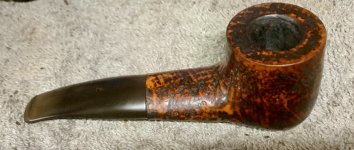One of my other hobbies is reading about battleships. The coolest battleships were the Dreadnoughts, those designed after the 1906 launch of HMS Dreadnought who mounted ten twelve inch guns and ran 21 knots. The world’s major powers built right about a hundred from 1906 until 1945.
Over half of the dreadnoughts ever launched fought at the Battle of Jutland ten years later, except Dreadnaught herself was obsolescent and stayed away. It’s all fascinating reading using a super dreadnaught sized pipe to keep you company.

The Battle of Jutland was one of the largest naval battles in history and while inconclusive, had a direct hand in the end of World War I.

www.thecollector.com
The Germans had lots of 11 inch naval rifles at Jutland and the Bristish had lots of 12 inch, 13.5 inch, and 15 inch guns.
Not much difference between an 11 inch wide cannon and a 12 or a 15 inch, it would seem. They’d all penetrate up to an inch of armor per inch of diameter of shell, roughly.
But the German 11 inch guns shot 600 pound shells and the 12” near nine hundred and the 15 inch near two thousand. As the bore diameter went up an inch the cost and weight of the cannon went up enormously as well, beyond the percentage increase in diameter. The bigger shells were slower to reload and they couldn’t carry as many,
Don’t feel sorry for the under gunned Germans at Jutland.
The Germans lost one modern battle cruiser that sank slowly and almost all the crew was saved. The British had three battle cruisers explode in fireballs taking nearly all their crews with them.
So what makes for the small end, of a truly large pipe?
A bore of at least .850”, with a chamber twice as deep.
This enormous .860” bore El Tigre Lorenzo weighs 60 grams, and holds about twice what a standard pipe holds.













